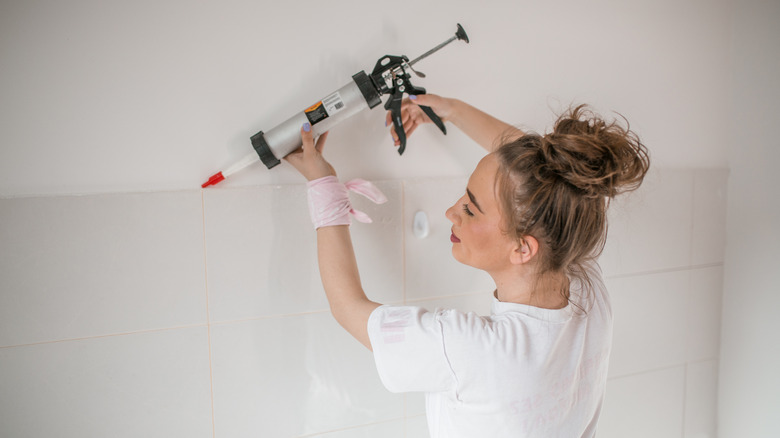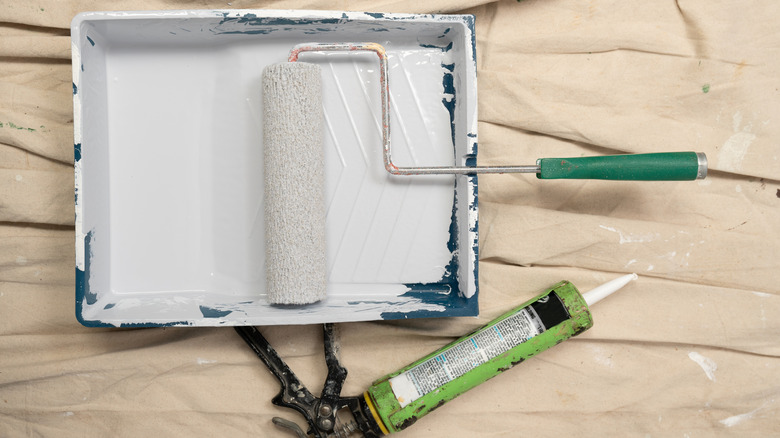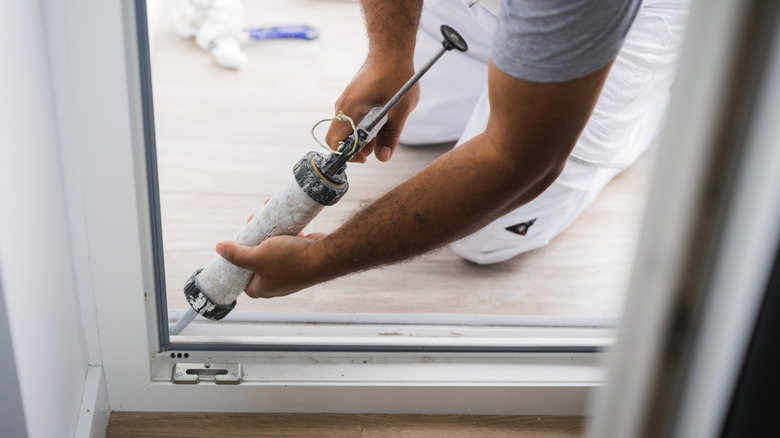The Difference Between Caulking And Silicone (& Which Is Right For You)
If you have a DIY project on the to-do list that involves some kind of sealant, the seemingly endless options available in the hardware store aisle or online can feel overwhelming when it comes to choosing the right product for the job. On top of that, there are actually two different types of sealants for homeowners out there — caulk and silicone — which are often used interchangeably in regular non-construction conversation, causing further confusion. These two materials certainly seem similar on the surface, as both come in those funny little cylindrical tubes, require a caulk gun to apply, and work to seal up gaps or cracks for home improvement projects. However, where they differ is rooted in their composition, making the two sealants ideally suited for different types of jobs.
Caulk is a water-based product made with acrylic or latex ingredients, which means it is easily smoothed with water when applied, dries quickly, and forms a rigid seal that can be painted over. On the other hand, silicone, as its name suggests, is completely made up of silicone polymers that create a very strong bonding agent between surfaces, as well as a naturally waterproof seal with ultimate flexibility for joints with lots of expanding and contracting. Because the two materials form various types of connections with the surrounding materials, it is essential to understand the differences between caulk and silicone sealers to select the best product for your project.
When it comes to paintable surfaces, caulking is your answer
Before determining jobs well-suited for caulk, it is important to first understand the composition of the product and how it interacts with the surfaces around it. Caulk is a commonly used sealant that, because of its water-soluble acrylic or latex composition, can be easily applied, manipulated, and cleaned with a little moisture. This also makes it fast-drying and lower in cost than silicone. Once applied, caulk creates a stiff seal between surfaces that can be painted over without any additional prep.
However, because of its inflexibility, caulk can only be used for joints with little to no movement, as it can weaken and crack over time. Similarly, exposure to water, humidity, and temperature changes can cause dried caulking to break down. Therefore, when compared to the durability of silicone, caulk generally requires more frequent replacement.
Caulk's paintability, on the other hand, makes it an essential tool for any job that requires two dry, painted, fixed surfaces to meet, such as with drywall panels, ceiling cracks, or trim work. Painting over the caulk will blend it in seamlessly with its surroundings, making it nearly invisible when finished. In addition, caulk acts as a great filler for larger cracks in materials like wood and masonry. Because of its quick curing time, it is a great option where a fast seal is needed.
Where there's water, silicone is the way to seal
Silicone is usually composed entirely of silicone polymers, making it pricier than caulk. Despite the cost, silicone has great adhesion, durability, and flexibility to allow for movement. It creates an elastic waterproof seal that maintains strong adhesion when exposed to temperature changes, moisture, and UV rays, making it ideal for long-term sealing projects. Some silicone sealants are even mold- and mildew-resistant. However, because it's not water-soluble, it's more challenging to apply than caulk. Silicone must be cleaned with solvents, like glass cleaner, to avoid it from drying to unwanted surfaces. It has a longer drying time and produces a strong odor days after application. Lastly, pure silicone sealants cannot be painted.
So if the job involves water, silicone is your go-to. It's perfect for waterproofing joints between tile, plumbing fixtures, sinks, tubs, showers, and window or door glass panels, as well as tackling exterior sealing jobs exposed to weather like gutters and roofs. Because of its strong adhesion, it's also ideal for bonding surfaces like metal, glass, and plastic while maintaining elasticity for expansion and contraction.
Want the best of both worlds? Blended hybrid formulas are designed specifically for combining the advantages of both sealers. There are caulks with added silicone ingredients for flexibility and durability, as well as silicone sealants with latex or acrylic additives that allow them to be painted. Understanding the differences in composition between sealer types, as well as which jobs they do best, will allow you to choose the right type, whether it's caulk or silicone, with confidence for the next DIY project on your docket.


